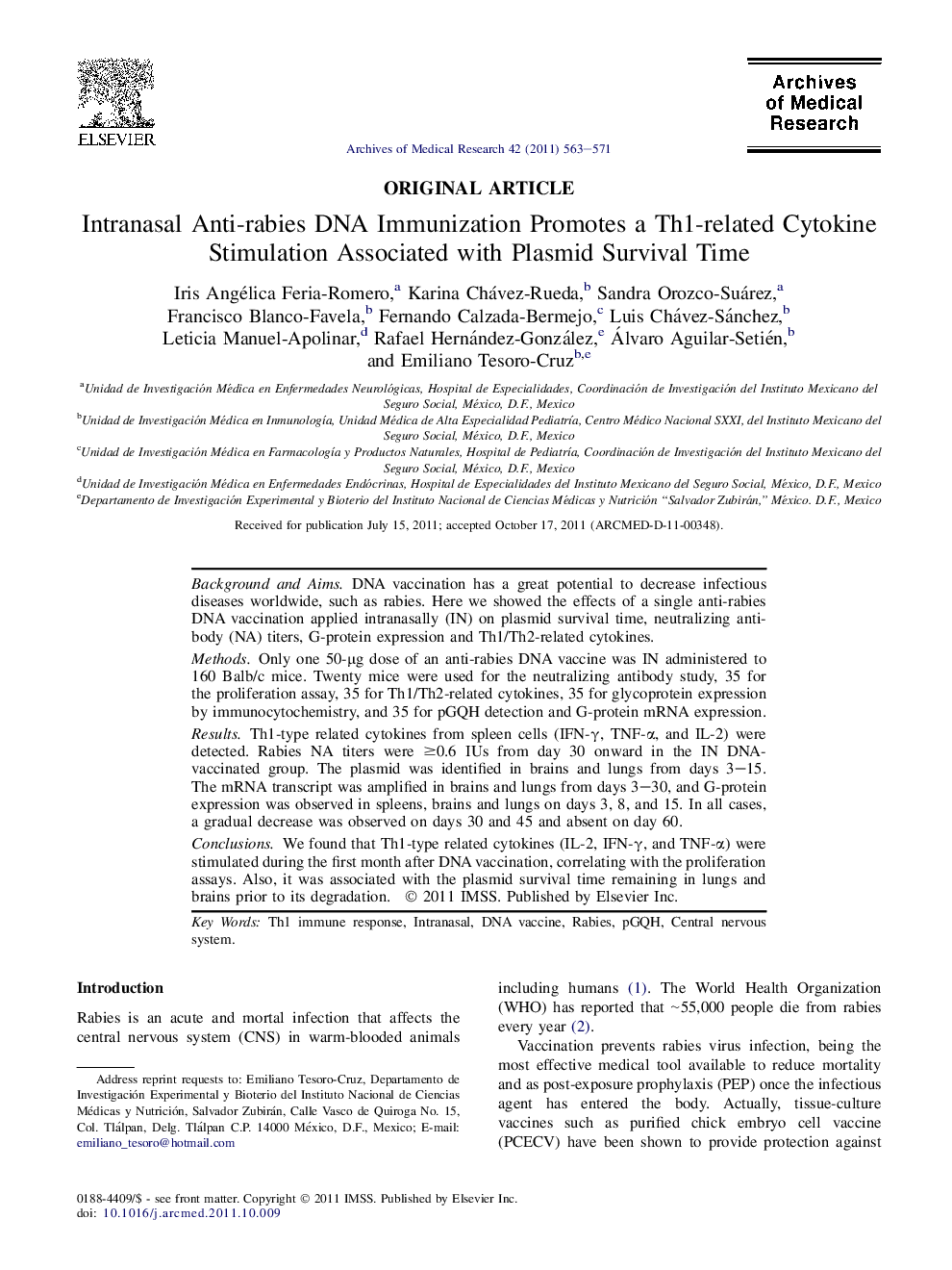| Article ID | Journal | Published Year | Pages | File Type |
|---|---|---|---|---|
| 3446731 | Archives of Medical Research | 2011 | 9 Pages |
Background and AimsDNA vaccination has a great potential to decrease infectious diseases worldwide, such as rabies. Here we showed the effects of a single anti-rabies DNA vaccination applied intranasally (IN) on plasmid survival time, neutralizing antibody (NA) titers, G-protein expression and Th1/Th2-related cytokines.MethodsOnly one 50-μg dose of an anti-rabies DNA vaccine was IN administered to 160 Balb/c mice. Twenty mice were used for the neutralizing antibody study, 35 for the proliferation assay, 35 for Th1/Th2-related cytokines, 35 for glycoprotein expression by immunocytochemistry, and 35 for pGQH detection and G-protein mRNA expression.ResultsTh1-type related cytokines from spleen cells (IFN-γ, TNF-α, and IL-2) were detected. Rabies NA titers were ≥0.6 IUs from day 30 onward in the IN DNA-vaccinated group. The plasmid was identified in brains and lungs from days 3–15. The mRNA transcript was amplified in brains and lungs from days 3–30, and G-protein expression was observed in spleens, brains and lungs on days 3, 8, and 15. In all cases, a gradual decrease was observed on days 30 and 45 and absent on day 60.ConclusionsWe found that Th1-type related cytokines (IL-2, IFN-γ, and TNF-α) were stimulated during the first month after DNA vaccination, correlating with the proliferation assays. Also, it was associated with the plasmid survival time remaining in lungs and brains prior to its degradation.
